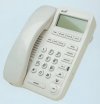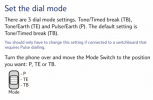Last.To.Know
Member
I have a BT Relate 1000 corded landline phone.
It looks like this:

Although mine is a little grubbier.
For some reason, it has switched from tones to pulse.
There is a switch under where it is set to
T-TB
The other options are
T-E
P-E
No selection changes it back to tones.
I have unplugged it and removed the batteries overnight in the hope of a reset.
Nope.
So, if anyone has any ideas, I would be grateful to hear them.
It looks like this:

Although mine is a little grubbier.
For some reason, it has switched from tones to pulse.
There is a switch under where it is set to
T-TB
The other options are
T-E
P-E
No selection changes it back to tones.
I have unplugged it and removed the batteries overnight in the hope of a reset.
Nope.
So, if anyone has any ideas, I would be grateful to hear them.


